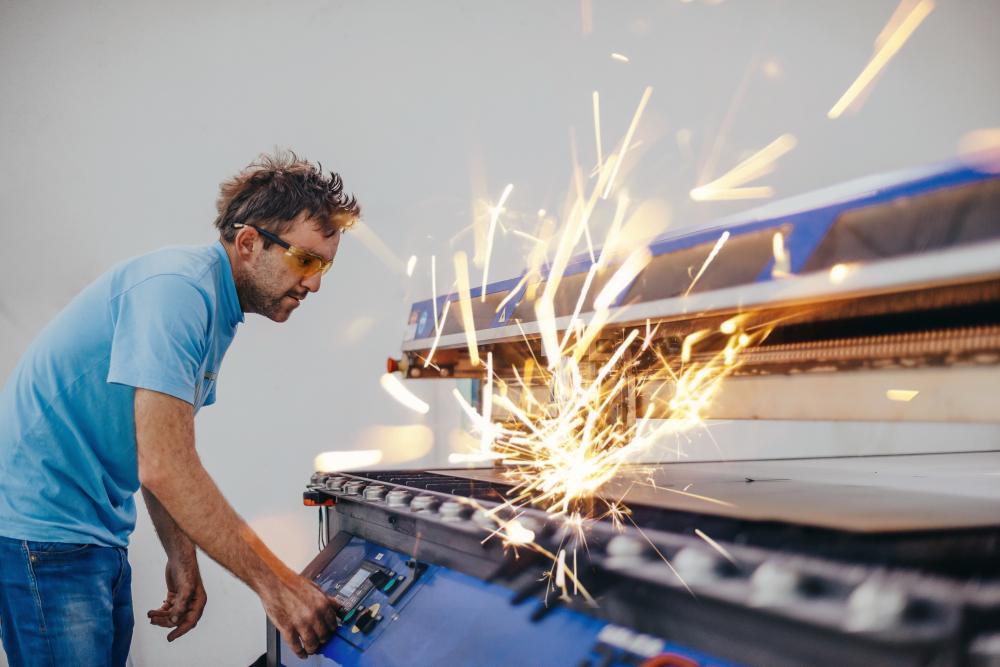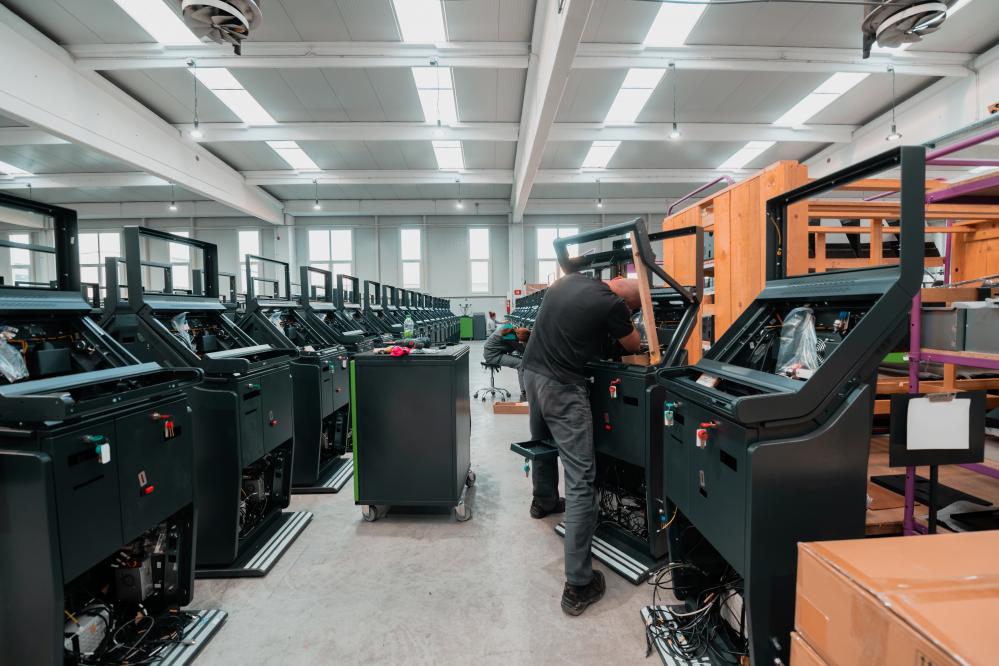Tube Bending

Key Benefits of Tube Bending
At Cal West Manufacturing, we pride ourselves on pushing the boundaries of metal fabrication, and one area of our expertise is tube bending. Tube bending is an intricate process that requires a balance between art and science to achieve precision while maintaining the integrity of the material. It's a process that we've mastered over years, harnessing both traditional and innovative techniques to meet our clients' varied needs.
Understanding Tube Bending
Tube bending is more than just reshaping metal; it's about creating solutions that fit our customers' specifications exactly, regardless of the complexity of their designs. Our approach combines the latest technology with our extensive experience to produce bends that meet tight tolerances and high-quality standards.
Types of Tube Bending
There are several methods of tube bending employed at Cal West Manufacturing, each chosen based on the specific requirements of the project. These include rotary draw bending, induction bending, and roll bending among others. Each method has its own set of advantages, suited for different types of applications.
Rotary Draw Bending
Rotary draw bending is a highly precise method we use extensively. It's ideal for creating consistent, tight-radius bends. Our state-of-the-art CNC machinery allows for complex, multi-angle bends with a high degree of repeatability, ensuring each piece is identical to the last.
Induction Bending
Induction bending is another technique we utilize, especially for larger, heavy-duty applications. By heating a specific area of the tube and applying pressure, we achieve bends with minimal distortion. This method is particularly beneficial for large-scale construction or infrastructure projects where precision and strength are paramount.
Roll Bending
Roll bending is our go-to for creating large, sweeping curves. Utilizing a series of rollers, we can gradually shape the tube into the desired bend radius. It's a method well-suited for architectural elements and large frames that require a gentle, continuous bend.
Choosing the Right Method
Deciding on the best tube bending technique involves considering the application, the material type, and the desired end result. Our engineering team collaborates closely with clients to select the optimal approach, blending technical know-how with creative problem-solving to achieve the best outcome.
Custom Tube Bending Solutions
Every project at Cal West Manufacturing is a unique challenge, and we thrive on finding custom solutions for our clients. Whether you need a single prototype or a large production run, our team is dedicated to delivering with precision and efficiency.
We understand the importance of accuracy in tube bending, and we are committed to maintaining the highest standards of quality. Using our advanced equipment and expertise, we are able to bend tubes into complex shapes and configurations, without compromising on strength or functionality.
Industry Applications
Our tube bending services cater to a wide range of industries, including automotive, aerospace, construction, and entertainment. From intricate automotive components to large structural elements for construction, our team has the skills and resources to tackle projects of any scale.
- Automotive: Creating custom exhaust systems and structural frames.
- Aerospace: Manufacturing components with precise tolerances for critical applications.
- Construction: Producing curved structural elements for buildings and infrastructure.
- Entertainment: Designing and fabricating custom parts for movie sets and installations.
The Cal West Advantage
Choosing Cal West Manufacturing for your tube bending needs means partnering with a team that's committed to excellence. Our combination of advanced technology, experienced professionals, and unwavering dedication to quality ensures that we deliver products that exceed expectations.
From the initial concept to the final product, we work closely with our clients at every step to ensure their vision is realized. With a focus on innovation and precision, we strive to provide tube bending solutions that are both effective and efficient.
Conclusion
Tube bending is a core capability at Cal West Manufacturing, integral to the custom fabrication solutions we provide to a diverse clientele. Through our dedication to craftsmanship, innovation, and quality, we have established ourselves as a leader in the industry. We're not just bending tubes; we're shaping the future of fabrication with every project we undertake.
Our team is ready to bring your ideas to life, leveraging our expertise in tube bending to create products that meet your exact specifications. Let us help you navigate the complexities of metal fabrication with ease and confidence.

What is the method of tube bending?
At Cal West Manufacturing, the method of tube bending we choose largely depends on the project's specific requirements. One common technique we employ is rotary draw bending, valued for its precision in creating consistent, tight-radius bends. This method uses a stationary die and a rotating form die to shape the tube, which is clamped to the former and drawn around it to achieve the desired angle. It's particularly well-suited for applications requiring high repeatability and tight tolerances, such as automotive exhaust systems or aerospace components. Another method we use is induction bending, where localized heat is applied to the tube while pressure is applied, allowing us to bend larger, thicker tubes with minimal distortion. Roll bending, employing a series of rollers to gradually form the tube into a large radius, is our go-to for more extensive, sweeping bends needed in construction or architectural applications. Deciding which method to use is a collaborative process between our team and our clients, ensuring we meet the project's needs while maintaining the integrity of the material.
What is the theory of tube bending?
The theory behind tube bending revolves around the fundamental concept of plastic deformation of metals. Metal tubes, when subjected to forces beyond their yield strength, will start to deform plastically, allowing them to be bent into new shapes. However, achieving the desired bend without compromising the tube's structural integrity requires understanding the material's properties, the mechanics of bending, and the interaction between the tube and the bending tools. For instance, when bending a tube, the outer wall stretches and thins out, while the inner wall compresses and thickens. Our expertise at Cal West Manufacturing lies in manipulating these variables to achieve accurate and precise bends, without causing defects such as wrinkling, cracking, or cross-sectional distortion. It's a delicate balance, blending art with science, to ensure the finished product meets both aesthetic and functional criteria."
How do you layout a tube for bending?
Layout for tube bending starts with a detailed plan that considers the end-use of the tube, the material being used, and the type of bend required. At Cal West Manufacturing, we first identify critical dimensions on the tube, such as the length of the straight sections and the centerline radius of the bends. Precision is key, so we use specialized software to visualize the final product and generate a bending program. This program guides our CNC machines to execute the bends accurately. For manual setups, we mark the tube using layout tools like angle finders and calipers to ensure each bend is placed correctly. It's a process that combines technology with hands-on skills, ensuring that every bend we make is precisely aligned with the project specifications.
How to mark a tube for bending?
Marking a tube for bending is an essential step that requires attention to detail and accuracy. At our facility, we start by determining the bend locations based on the design specifications. Using a combination of digital calipers, angle finders, and special marking tools, we carefully transfer these measurements onto the tube. For complex or high-precision projects, we often utilize a laser marking system that directly engraves the measurements and bend angles onto the metal surface, ensuring exact placement. This method minimizes errors and streamlines the bending process. It's a perfect example of how technology can enhance traditional manufacturing techniques, allowing us to achieve precise results that meet our clients' exacting standards.
What are the key factors in choosing a tube bending method?
Choosing the right tube bending method involves a careful consideration of several factors. The type of material, thickness of the tube, bend radius, and the overall design requirements play crucial roles in this decision. For example, softer materials like aluminum might require different handling than tougher materials like stainless steel. The thickness of the tube affects how easily it can be bent without collapsing or wrinkling. A tight bend radius might necessitate a method like rotary draw bending for precision, while larger, more gradual bends could be better suited to roll bending. At Cal West Manufacturing, we also consider the final application of the product, as some industries might have specific standards or tolerances that need to be met. Our extensive experience allows us to guide our clients towards the best method for their project, ensuring a balance between performance, aesthetics, and cost.
How does tube bending impact material properties?
Tube bending can significantly impact the material properties of the tube being manipulated. During the bending process, the material undergoes stress, leading to work hardening in the outer radius and potential compression in the inner radius. This can alter the material's hardness, tensile strength, and ductility. At Cal West Manufacturing, we understand these changes intimately and take steps to mitigate any negative effects. For instance, certain materials may require annealing or heat treating post-bending to relieve stresses and return the material to its desired state of ductility. Our expertise ensures that despite the inherent stresses of bending, the final product maintains its structural integrity and meets the specific performance criteria needed for its application. It's a nuanced aspect of our work, reflecting the depth of our understanding of material science and its application in tube bending.
What are the common applications of tube bending?
Tube bending finds applications in a multitude of industries, showcasing its versatility and importance. In the automotive sector, custom bent tubes are integral for exhaust systems, frames, and chassis. Aerospace applications demand precise tube bending for fluid lines, structural components, and more, where every millimeter matters for performance and safety. The construction industry benefits from bent tubes in architectural features, frameworks, and infrastructure, where both strength and aesthetics are critical. Even in the entertainment industry, we've designed and fabricated custom bent tubes for movie sets and installations, proving that the applications of tube bending are as varied as our clients' imaginations. At Cal West Manufacturing, our ability to adapt and meet these diverse needs speaks to our expertise and passion for what we do.
Resources
- British Stainless Steel Association - Tube Bending Guide: A comprehensive guide to tube bending techniques and considerations provided by the British Stainless Steel Association.
- The Fabricator - The Art of Tube Bending: An article discussing the nuances of tube bending and the artistry involved in the process.
- Fabricating & Metalworking - The Science of Tube Bending: An in-depth look at the mechanics and materials involved in tube bending, providing valuable insights for professionals in the industry.
- Metal Fabricator's Handbook: A comprehensive resource for metal fabrication techniques, including tube bending, suitable for both beginners and experienced professionals.
